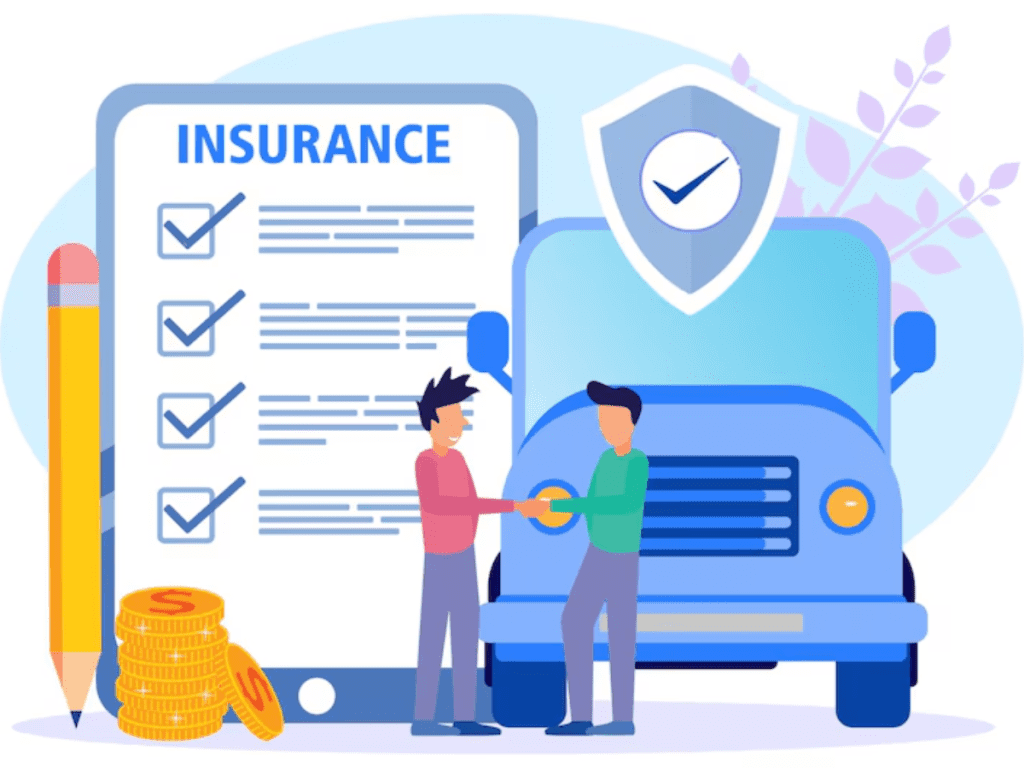Introduction
The times are changing, and with it, the way people live and the kind of homes they are looking for. The non-traditional homes, such as tiny homes, mobile homes, and RVs, have gained popularity over the last few years with a promise of a simpler life, of freedom, and sometimes lower living expenses. These new living quarters are not just viewed as a fad but also as a sensible choice for those who wish to live simply, travel, or reduce their living quarters. When it comes to insurance, tiny homes, RVs, and mobile homes are distinct from traditional houses, which can complicate matters when searching for the right policy. Insuring these untraditional homes needs an awareness of the unique risk involved, types of policies for insuring such homes, and how to modify insurance to your specific living style. This is a step-by-step guide through all you should know to cover a tiny home, mobile home, or RV efficiently and cost-effectively.
Understanding the Unique Characteristics of Tiny Homes, Mobile Homes, and RVs
The first step in understanding how to insure a tiny home, mobile home, or RV is knowing what makes them different from traditional houses. The insurance requirements for these types of homes are influenced by their design, mobility, and the way they are used. Here is a brief look at each type of dwelling.
Tiny Homes
Tiny homes are just that: small houses that are generally under 400 square feet. Tiny homes are made for minimalist living, and they can even be constructed on wheels to enable them to be moved around. Tiny homes tend to appeal to individuals who desire to simplify and downsize their living situation, and they can be permanent dwellings or vacation homes. Because tiny houses are less standardized than other kinds of homes, they pose a special challenge in terms of insurance. Whether or not your tiny house is mobile will have a big impact on determining what kind of coverage you’ll require.
Mobile Homes
Mobile homes, or manufactured homes, are homes that are built in a factory and then relocated from place to place. In contrast to tiny houses, which are sometimes specifically designed for their owners, mobile homes tend to be factory-built and less like temporary shelters, though still removable if that were to be desired. They also tend to be larger in size than tiny homes, and are sometimes found within mobile home parks or private land. Insuring a mobile home would generally be in the form of a policy like that for traditional homes but may require certain special provisions to accommodate the mobility and construction of the home.
RVs (Recreational Vehicles)
RVs are vehicles used for living and traveling. They are available in all sizes and forms, ranging from motorhomes to travel trailers and fifth-wheel campers. RVs are employed both for recreation and permanent residence, and they provide the mobility freedom with a home-like living condition. RV insurance is special because it takes parts of auto insurance and homeowners’ insurance and brings them together, providing coverage for the vehicle and the living quarters within. As RVs are always on the go and at risk of the road and possible natural disasters, the right insurance is needed to provide protection for the vehicle as well as its occupants.
Types of Coverage for Non-Traditional Homes
When insuring unconventional dwellings such as tiny homes, mobile homes, and RVs, homeowners have a variety of types of coverage that they must consider. Each type of dwelling demands a different type of approach to insurance, depending on the mobility, location, and needs of the home.
Tiny Home Insurance Coverage
Insurance of a tiny home relies heavily on its mobility status. Tiny homes on wheels that are on the move often would need insurance similar to that of a recreational vehicle, whereas fixed tiny homes might need a policy that is like homeowners’ insurance. Tiny homes can be deemed as personal property in some instances, not as real estate, and this might complicate securing the usual homeowners’ insurance.
For wheeled tiny homes, it’s crucial to have coverage for the structure as well as the contents within. This kind of policy should cover against perils like damage from extreme weather, fire, theft, and vandalism. Also, if the tiny home is being occupied as a primary residence, personal property insurance is required to cover items within the home, including furniture, electronics, and personal items.
For tiny homes that are fixed, the coverage might be closer to that of a mobile home policy, which would often cover the dwelling, personal items, and liability. It is important to get an insurer who knows the specific needs of tiny homeowners since most conventional insurance companies might not be able to offer policies for these homes.
Mobile Home Insurance Coverage
Mobile homes also have their own special insurance requirements because of their design and mobility. Though larger and more uniform than tiny homes, they are still different from conventional dwellings in terms of how coverage is required. Mobile home insurance traditionally encompasses two forms of coverage: property and liability. Property coverage safeguards the mobile home’s structure against damage caused by fire, vandalism, or weather-related activities such as storms or hail. It also includes personal property within the dwelling, e.g., electronics, furniture, and apparel.
Liability coverage guards against homeowners if a person is hurt on their property or if they accidentally damage the property of another. This is most relevant for mobile homeowners, particularly those residing in mobile home parks where there might be increased interaction with neighbors. Optional protection is sometimes provided by some mobile home insurance for other risks, including vandalism, accidental injury, and flooding.
It should be known that insurance for mobile homes can be different from home insurance in the sense of coverage amounts and exclusions. Homeowners need to contact their insurance company to make sure all the risks of concern are covered and get to know if there is any limitation of the policy.
RV Insurance Coverage
One needs RV insurance if one uses an RV as a principal dwelling or for leisure activities. RV insurance draws on the principles of both homeowners’ insurance and auto insurance, protecting both the vehicle and the living quarters within. Like regular car insurance, RV insurance offers protection for accidents, theft, and vandalism against the vehicle. RV owners also require protection for the living quarters’ structure and contents, as well as any personal property and permanent fixtures within the RV.
There are two primary forms of coverage for RVs: collision and comprehensive. Comprehensive coverage helps against non-accident activities like theft, fire, or weather damage, while collision coverage helps against accidents that happen as a result of an accident. RV insurance could also have liability coverage to ensure the driver against an accident where another vehicle or property is damaged.
Along with these basic coverage types, RV insurance policies usually provide optional coverage for roadside assistance, off-road driving, and personal property. For full-time RVers, additional coverage might be necessary for extended travel, such as medical coverage, personal property protection, and emergency travel costs.
Selecting the Right Insurance Policy
Selecting the right insurance policy for a tiny home, mobile home, or RV involves understanding your specific needs and ensuring that your coverage is tailored to your living situation. Here are some important factors to consider when choosing the right insurance for your non-traditional home.
Comprehensive vs. Liability Coverage
When choosing an insurance policy, you’ll need to decide whether to go with comprehensive coverage or liability coverage. Comprehensive coverage gives the widest coverage, protecting your property against damage caused by a range of perils like fire, theft, vandalism, and natural disasters. It also insures personal belongings within your house. Liability coverage, however, insures you only if you are liable for causing damage to someone else’s property or hurting someone else.
For tiny homes, mobile homes, and RVs, comprehensive coverage is often the better option, as it offers more extensive protection. However, if you are primarily concerned about protecting yourself from liability risks, liability coverage may be more appropriate.
Additional Coverage Options
In addition to standard coverage, there are a few other things you might want to look into when insuring your non-traditional residence. Flood coverage is especially valuable for mobile homes and RVs since these homes are more likely to be damaged from flooding than standard houses. If you happen to reside in a flood zone, increasing your policy with this kind of coverage can ensure that you are protected from water damage.
Another consideration is personal property coverage. Most insurance policies cover the home itself, but not the items within. If you own valuable items such as electronics, furniture, or collectibles, you might want to purchase personal property coverage to protect these items should they be stolen, burned up in a fire, or damaged.
Shopping Around for Insurance Providers
Not every insurance provider provides coverage for alternative homes, so it is worth shopping around and finding a provider that specializes in insuring RVs, mobile homes, and tiny homes. Find providers that recognize the special needs of alternative homeowners and provide tailored coverage solutions. Some providers might provide discounts for bundling policies, such as bundling RV and auto insurance, so be sure to inquire about any discounts available.
Understanding Local Regulations
Local laws become important when you consider the types of insurance that you can procure for your unconventional home. The zoning regulations, building codes, and insurance restrictions differ from state to state, and therefore you should know what the laws in your region say before you acquire insurance. Various states have individual insurance requirements if you are bringing a mobile home or an RV, and the states have rules on where and how you are allowed to leave your tiny house or mobile house parked.
Before buying insurance, contact local authorities to make sure your home is in compliance with local regulations and that you are purchasing the correct type of coverage for your particular arrangement.
Conclusion
It takes careful attention and research to insure a tiny house, trailer home, or motor home. These alternative dwellings have special issues when it comes to insurance, but with the proper information, you can locate a policy that gives you the protection you’re looking for. From dwelling in a mini home on wheels to residing in a mobile home in a park to hitting the road in an RV, you need to know the unique risks involved and the kinds of coverage available. By shopping around for the right insurance provider, considering additional coverage options, and ensuring that your policy aligns with local regulations, you can rest easy knowing that your non-traditional home is properly insured.

